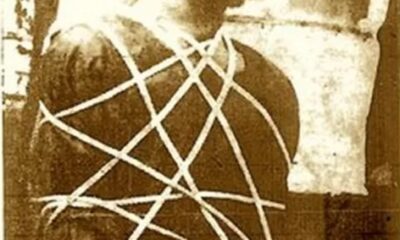METRO
Daughter took a knife and stabbed her mom to death during an argument over her relationship with one of her mother’s friends, causing the woman to bleed out and die; sentenced

Continue Reading
METRO
Racist Cops Handcuff Black Female General, Her Call to Pentagon Destroyed Their Careers –
METRO
One of death row’s oldest inmates gave scathing final words before execution by lethal injection –
METRO
People in shock after hearing bizarre leaked audio from Trump’s new head of Social Security reacting to job offer –
-

 IN-THE-NEWS11 months ago
IN-THE-NEWS11 months agoFamous psychologist: mothers need to go on vacation more often
-

 HEALTH & LIFESTYLE6 months ago
HEALTH & LIFESTYLE6 months agoIf You Fall In Blood Group O, Avoid These Habits And You Will Live Longer
-

 SPORTS10 months ago
SPORTS10 months agoMartin Perez shined in his first outing with the Padres
-

 HEALTH & LIFESTYLE11 months ago
HEALTH & LIFESTYLE11 months agoReasons why some pregnant women give birth to disabled babies
-

 SPORTS11 months ago
SPORTS11 months agoThe James Family Dynasty: LeBron and Bronny Make NBA History Together
-

 METRO6 months ago
METRO6 months agoThe Real Story of Ishola Oyenusi – Nigeria’s Deadliest Armed Robber
-

 SPORTS10 months ago
SPORTS10 months agoTeddy Riner: The Judo Titan’s Historic Double Victory and Unusual Challenge
-

 METRO11 months ago
METRO11 months agoWhat happened to Githurai most loved police officer



